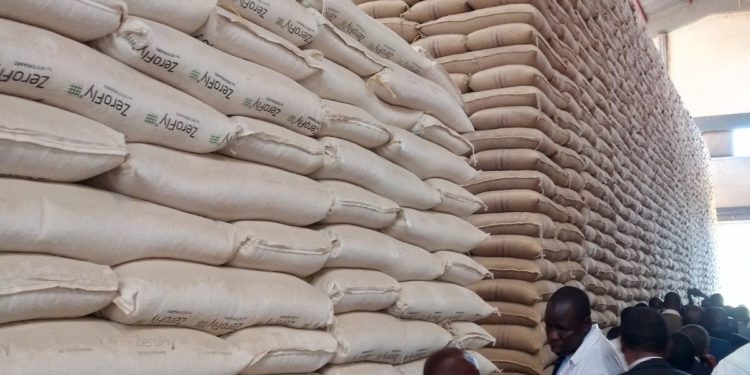The maize market in East African regional markets underwent a significant transformation in the latter half of 2023, witnessing a substantial decline in prices within the Kenyan market.
This shift comes after an extended period of elevated prices resulting from a below-average harvest in the previous fiscal year and disruptions in production and supply due to conflicts. The region is now experiencing relief due to a notable surplus brought about by improved harvests as the year concludes.
Data released by the Famine Early Warning Systems Network (FEWS NET) indicates an overall decline in maize prices during Q3’2023, though still higher than the same period in 2022 in many East African markets. Prices are beginning to fall below the five-year average, including in deficit countries such as Kenya.
The primary catalyst for this price relief is the exceptional harvests witnessed across most East African nations. Tanzania’s surplus played a crucial role in alleviating shortfalls in Kenya and other maize deficit countries.

Averages. Source: Famine Early Warning Systems Network (FEWS NET)
Kenya, in particular, observed an increase in maize supply due to a moderately successful July-to-August harvest and rising substitutes like grains, roots, and tubers. This surge in produce can be attributed to substantial rainfall in the East African region in the latter half of 2023, coinciding with the World Meteorological Organization’s prediction of an El Niño event.
The Kenya National Bureau of Statistics (KNBS) measures the Consumer Price Index (CPI) through monthly surveys of retail prices targeting a representative basket of household consumption goods and services. In November 2023, the overall year-on-year inflation rate was 6.8%, a slight decline from the 6.9% recorded in October 2023.
Maize grain prices decreased by 6.2% year-on-year from November 2022 and further decreased by 3.3% month-on-month from October 2023. Similarly, sifted maize flour prices decreased by 7.4% year-on-year from November 2022 and by 6.5% month-on-month from October 2023. These significant price declines underscore the direct correlation between favorable weather conditions and agricultural output.
As the Kenyan agricultural sector reaps the benefits of ample rainfall, the impact on maize prices is proving advantageous for consumers, potentially contributing to stabilizing the cost of living. Nevertheless, it is crucial for economic stakeholders to closely monitor the market to ensure sustained stability and prevent abrupt price fluctuations.
While Kenya navigates these changing market dynamics, the hope is that this period of abundant rainfall and surplus harvests can establish the groundwork for a more resilient and stable food market in the coming years.


















